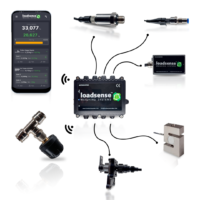Revolutionizing Load Management: The Role of the Truck Airbag Scale in Modern Hauling
In today’s fast-paced logistics and transportation industry, the importance of accurate load management cannot be overstated. Overloaded trucks pose serious risks, not only to the safety of drivers and other road users but also to the longevity of the vehicles themselves. With increasing government regulations and a growing need for efficiency, modern technologies have stepped in to offer smarter solutions. One such innovation is the Truck Airbag Scale, a system designed to provide real-time weight monitoring, reducing risks and improving operational productivity.
Understanding the Truck Airbag Scale
A Truck Airbag Scale is a pressure-based weighing system integrated into a vehicle’s air suspension system. Unlike traditional load scales or static weigh stations, this onboard technology continuously monitors air pressure changes in the suspension, which directly correlate to the load weight. By converting these pressure readings into accurate weight measurements, truckers and fleet operators gain instant access to critical information—right from the cab or even via a mobile app.
This scale is especially beneficial for vehicles with air-ride suspension systems. It allows operators to ensure their truck is loaded within legal and safe limits before leaving the yard, thereby eliminating guesswork, reducing the need for stopovers at weigh stations, and avoiding costly fines due to overloading.
Advantages of Using a Truck Airbag Scale
The Truck Airbag Scale brings several game-changing benefits to the table:
-
Improved Safety: Overloaded trucks are harder to control and take longer to stop. A properly calibrated airbag scale ensures that drivers always know when their load is approaching dangerous limits.
-
Cost Savings: Avoiding overweight fines and reducing the frequency of unnecessary trips to weigh stations translates to significant cost savings.
-
Reduced Wear and Tear: Balanced loads mean less strain on axles, tires, and brakes—extending the vehicle’s lifespan.
-
Increased Efficiency: Instant weight readings save time during dispatch and loading operations, boosting overall fleet productivity.
Midway through a route, having real-time data from a Truck Airbag Scale ensures that shifts in cargo weight distribution or unauthorized load changes are detected immediately. This proactive monitoring reduces the chances of equipment failure or compliance issues down the line.

Trailer Airbag Scale: A Complementary Innovation
For fleets operating with detachable trailers, the Trailer Airbag Scale serves as a valuable counterpart. Much like its truck-mounted version, this device monitors the air suspension pressure in trailers, offering weight data that is just as precise and immediate. Fleets using both truck and trailer airbag scales benefit from a comprehensive view of the entire vehicle load configuration.
The Trailer Airbag Scale proves particularly useful in drop-and-hook operations where trailers are picked up from various locations. Drivers can instantly verify the load weight of a newly connected trailer without having to find the nearest certified weigh station. This not only saves time but also minimizes liability risks from unknowingly hauling an overloaded trailer.
Integration and Smart Features
Modern airbag scales often come equipped with Bluetooth or telematics integration, enabling data transmission to mobile apps or fleet management systems. These systems can be programmed to alert drivers or dispatchers when load weights approach maximum thresholds. Some models even allow historical data tracking, enabling operators to analyze trends and optimize load planning over time.
Conclusion
As the transportation and freight industries continue to evolve, tools like the Truck Airbag Scale and the Trailer Airbag Scale are proving indispensable. These technologies not only enhance safety and compliance but also drive cost-efficiency and operational excellence. For logistics providers aiming to stay ahead in a competitive market, investing in smart load management tools is no longer optional—it’s essential. Companies embracing innovations like these are positioning themselves for a future where data-driven decision-making becomes the norm in every mile traveled.
Comments
Post a Comment